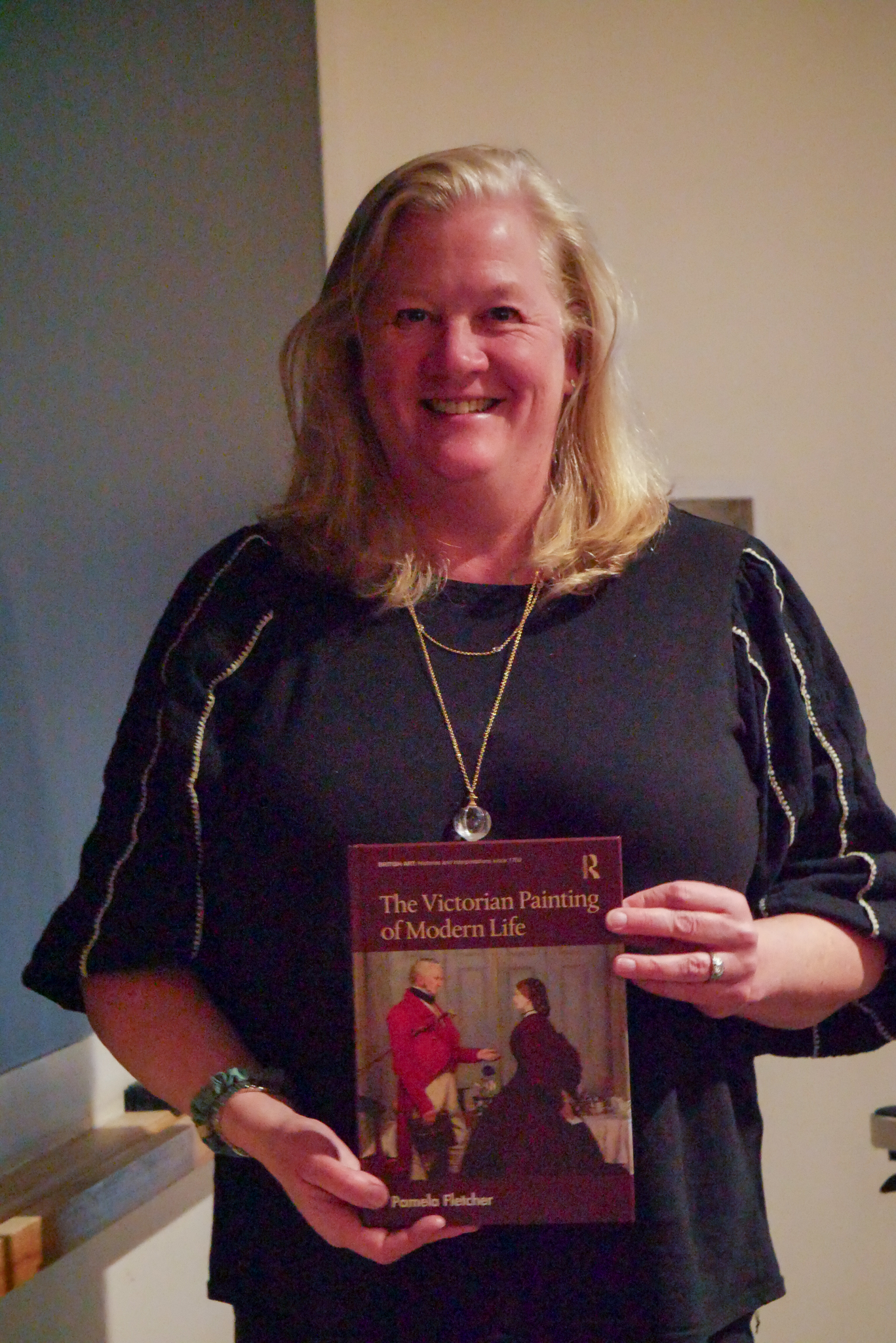What does modern life feel like?: Book launch celebrates Pamela Fletcher’s study of Victorian painting
March 28, 2025
 Isa Cruz
Isa CruzYesterday afternoon, Professor of Art History Pamela Fletcher was joined in celebration of her newly published book “The Victorian Painting of Modern Life.”
Speaking on her scholarship, Fletcher stood in front of a screen displaying renditions of various Victorian paintings. Fletcher primarily discussed William Gale’s “The Captured Runaway” (1856), which was acquired by the Bowdoin College Museum of Art (BCMA) in 2022. In the painting, a pale enslaved woman is chained to a bounty hunter who seeks to return her to captivity in the American South.
Postdoctoral Curatorial Fellow Sean Kramer introduced Fletcher, commenting on the vital role she played in the acquisition of “The Captive Runaway” and the connections between her scholarship and the BCMA’s collection.
“This is one of the many works that Professor Fletcher discusses in her book,” said Kramer. “But it also really signals a friendship and partnership with the museum and with me, personally. Professor Fletcher was a strong advocate for acquiring this painting.”
As Fletcher began her remarks, she held up a printed copy of her book to audience applause. “The Victorian Painting of Modern Life,” published by Routledge, tells the story of the British modern-life style of painting which came to popularity in the mid-nineteenth century. These paintings were highly emotional and contemporary in their depictions of everyday scenes. Fletcher noted the place of “The Captured Runaway” in her book’s overall argument: the work evidences the moral standing of modern life paintings which depict scenes outside of London.
“As I was finishing a draft of the manuscript, I got an email from Frank, saying that they’d been contacted by a dealer about this painting by William Gale,” Fletcher said. “I replied it’s exactly the kind of painting I’m writing about right now, and it could be used in a million ways for teaching nineteenth-century genre painting, realism in general, the relationship between art, literature and current events, questions of race and racism in the 19th century and animals, especially dogs, with their relationship to feeling.”
Fletcher also noted, in her speech and at length in her book, the influence of William Holman Hunt and William Powell Frith on modern life paintings. These painters and others used depictions of reality to explore themes of urbanization, political representation and imperial wars in India. But their work was novel and, at times, unpopular, noted Fletcher.
“Frith was anxious about the reaction to his painting, writing to his friend and patron Thomas Miller that ‘What you, and by you I mean the picture-loving public, will think I long but rather dread to know,’” Fletcher recounted.
Gradually, however, Victorian painters fought for the recognition “that such subjects were the proper material of high art,” Fletcher continued. Modern life paintings were especially attuned to emotion, which Fletcher’s book contends is an attempt to show subjects in their emotional bonds with others, whether romantic linkages, chance encounters or membership in the broader human collective.
“It’s my contention that the central question of the Victorian painting of modern life was this: What does modern life feel like?” Fletcher said.
Ella Riccio ’25, a devotee of Victorian art and literature, was eager to hear what modern life felt like to painters like Hunt, Gale and Frith. She appreciated Fletcher’s remarks on the era. Riccio is currently working on a creative writing project about smog in the Victorian era.
“I’m using a lot of paintings to look at how people view smoke,” Riccio said. “And so this provided a backstory about what that was like.”
After Fletcher’s remarks and a Q&A period, attendees gathered in the BCMA for a reception. Fletcher noted that “The Captured Runaway” hangs on the museum’s second floor and encouraged a voyage to view it.
“If you have a minute, walk upstairs and see the painting, and bring someone with you so you can talk about it,” she said.

Comments
Before submitting a comment, please review our comment policy. Some key points from the policy: